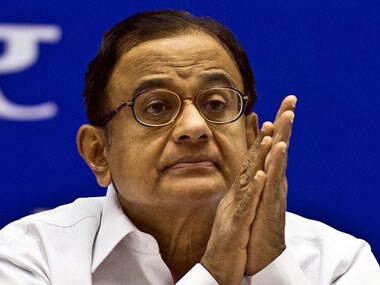The Congress has deployed its sharpshooters to counter-attack the damaging revelations made in journalist Sanjay Baru’s book on his one-time boss, Manmohan Singh. Finance Minister P Chidambaram told CNN-IBN that never once in his ten years as a Cabinet Minister in UPA I and II was he asked to consult Sonia Gandhi on matters of government, the very person whom Baru alleges was the real and sole centre of power in the UPA. There is no reason to doubt Chidambaram’s claim. But the fact is that power at the top isn’t always exercised by summoning ministers for consultations. In fact, in a Parliamentary system, Prime Ministerial authority is ultimately derived from just one thing: the power to appoint ministers, allocate them portfolios and sack them when necessary. In most parliamentary democracies, Prime Ministers reshuffle their Cabinets frequently, rewarding the performers and weeding out those who are not carrying forward effectively the agenda of the government which the PM leads. It is the fear of losing one’s job that keeps ministers on their toes and forces them fall in line with Prime Ministerial authority. [caption id=“attachment_1477503” align=“alignleft” width=“380”]  Of course, Chidambaram and the Congress party are free to disagree with Baru’s versions of events (do they disagree about the positive bits as well?), even term them ‘fiction’. AFP[/caption] In the UPA, no minister, and that includes Chidambaram, owed their jobs to Manmohan Singh. Whether or not they were summoned by Sonia Gandhi, they were always going to do her bidding because only she the authority to sack them, promote them, or retain them. That power alone granted her the Super Prime Minister status. Manmohan was just a glorified bureaucrat. He did not qualify to be a powerful bureaucrat because Sonia did not even nudge her appointees to listen to his advice. In his second point of counter-attack, Chidambaram told CNN-IBN that only political decisions were taken by Sonia Gandhi and the party. This is a disingenuous argument because all government decisions are political. It is to use Chidambaram’s favourite word, puerile to make a distinction between political and non-political decisions at the top level of Government. Was it not Sonia Gandhi who appointed Pranab Mukherjee as Finance Minister in UPA II? Was it not Sonia Gandhi who made happen, the bureaucratic appointment of Pulok Chatterjee as Principal Secretary to the Prime Minister? Was it not Sonia Gandhi who pushed the five “Rights-based legislations” of the UPA (via the NAC), never mind their costs to the exchequer and the economy? Was it not Sonia Gandhi who ensured that Jairam Ramesh, the obstructionist minister of state (independent charge) for environment and forests, the mastermind of policy paralysis was promoted to Cabinet rank and given the crucial portfolio of rural development instead of being sacked for non-performance? Was it not Sonia Gandhi who chose Jayanthi Natrajan as Ramesh’s replacement? Was it not Sonia Gandhi who promoted then Power Minister Sushil Shinde to Home Minister hours after a massive country-wide breakdown of electricity supply? Did none of these “political” decisions have a bearing on the economy or the society? Presumably what Chidambaram means by political decisions are drawing alliances, selecting Rajya Sabha MPs and appointing Congress General Secretaries. But we know, from Baru’s account and other evidence that she took several other decisions, some of which are contained in the questions listed above. Of course, Chidambaram and the Congress party are free to disagree with Baru’s versions of events (do they disagree about the positive bits as well?), even term them ‘fiction’. But in the surreal workings of the UPA, it is perfectly possible for truth to be stranger than fiction.
In the UPA, no minister, and that includes Chidambaram, owed their jobs to Manmohan Singh. Whether or not they were summoned by Sonia Gandhi, they were always going to do her bidding because only she the authority to sack them, promote them, or retain them.
Advertisement
End of Article


)
)
)
)
)
)
)
)
)



